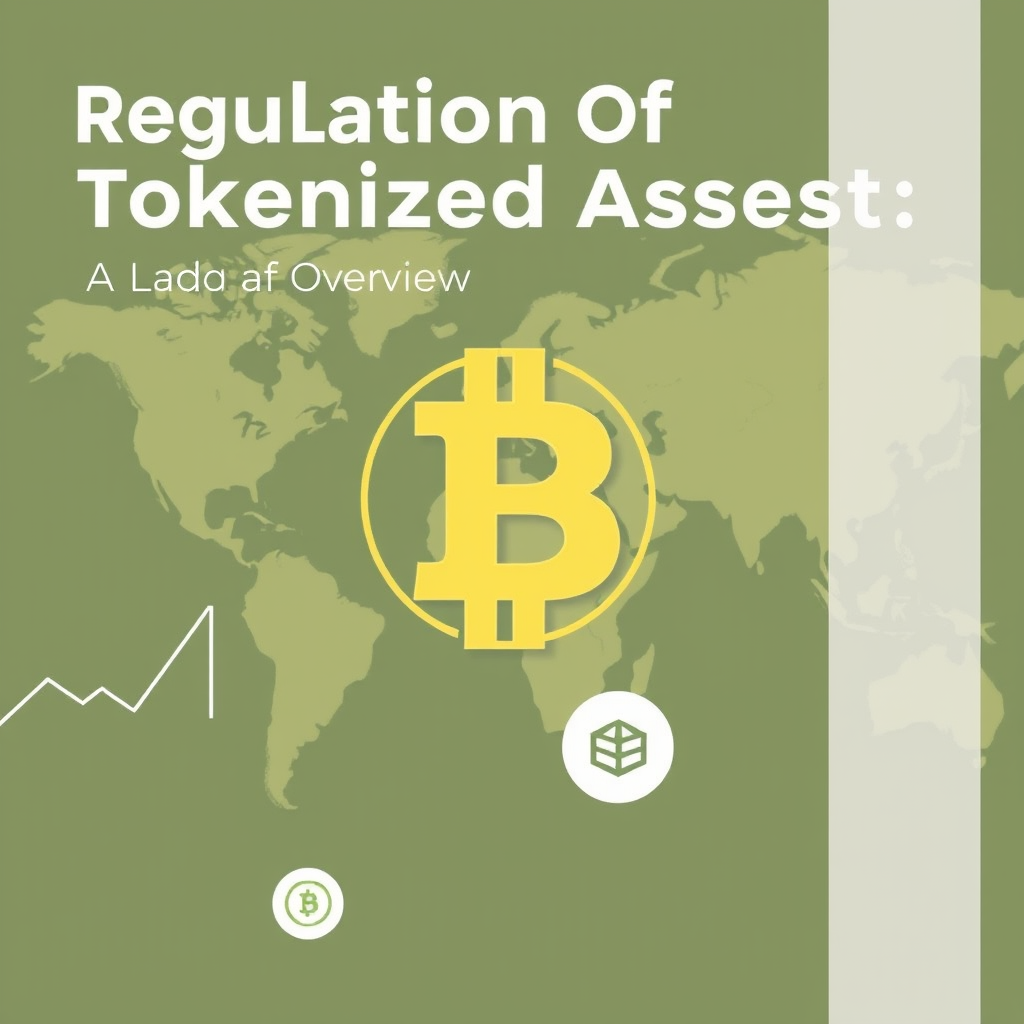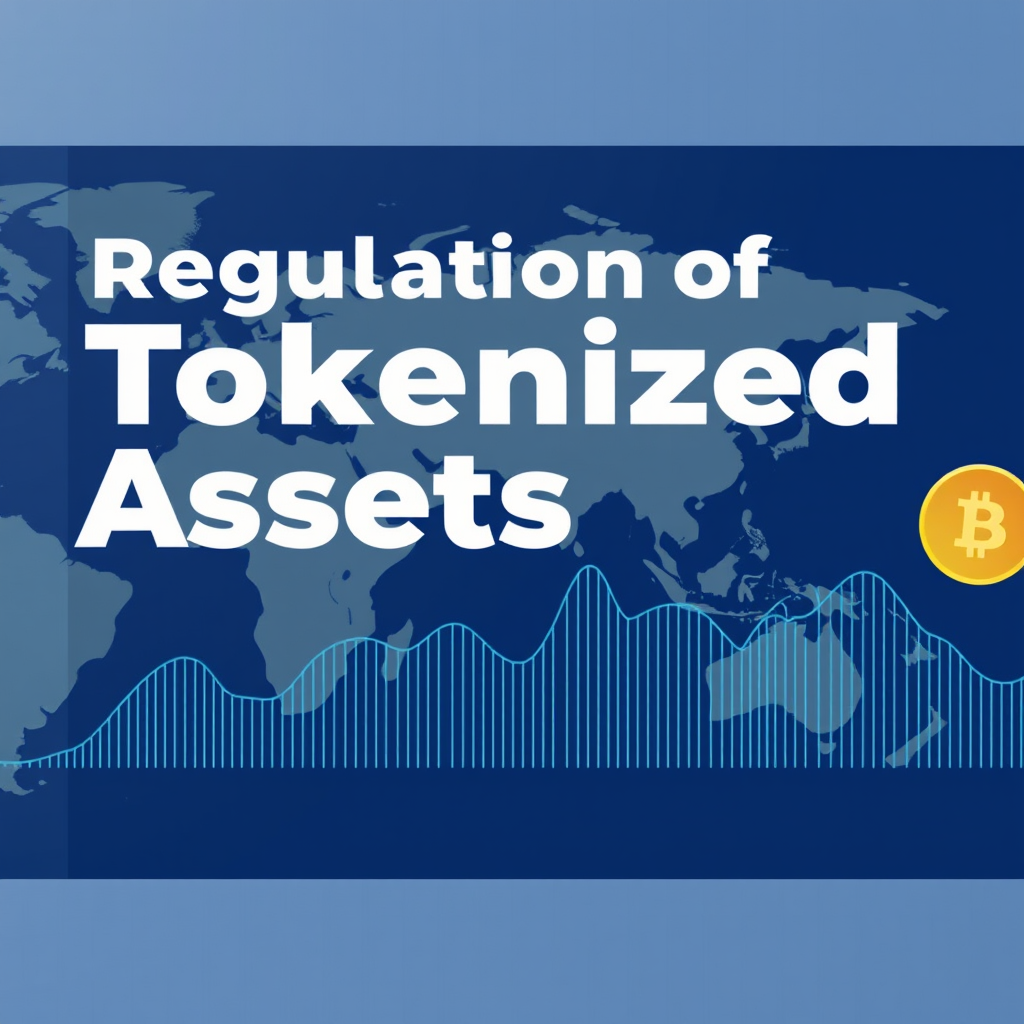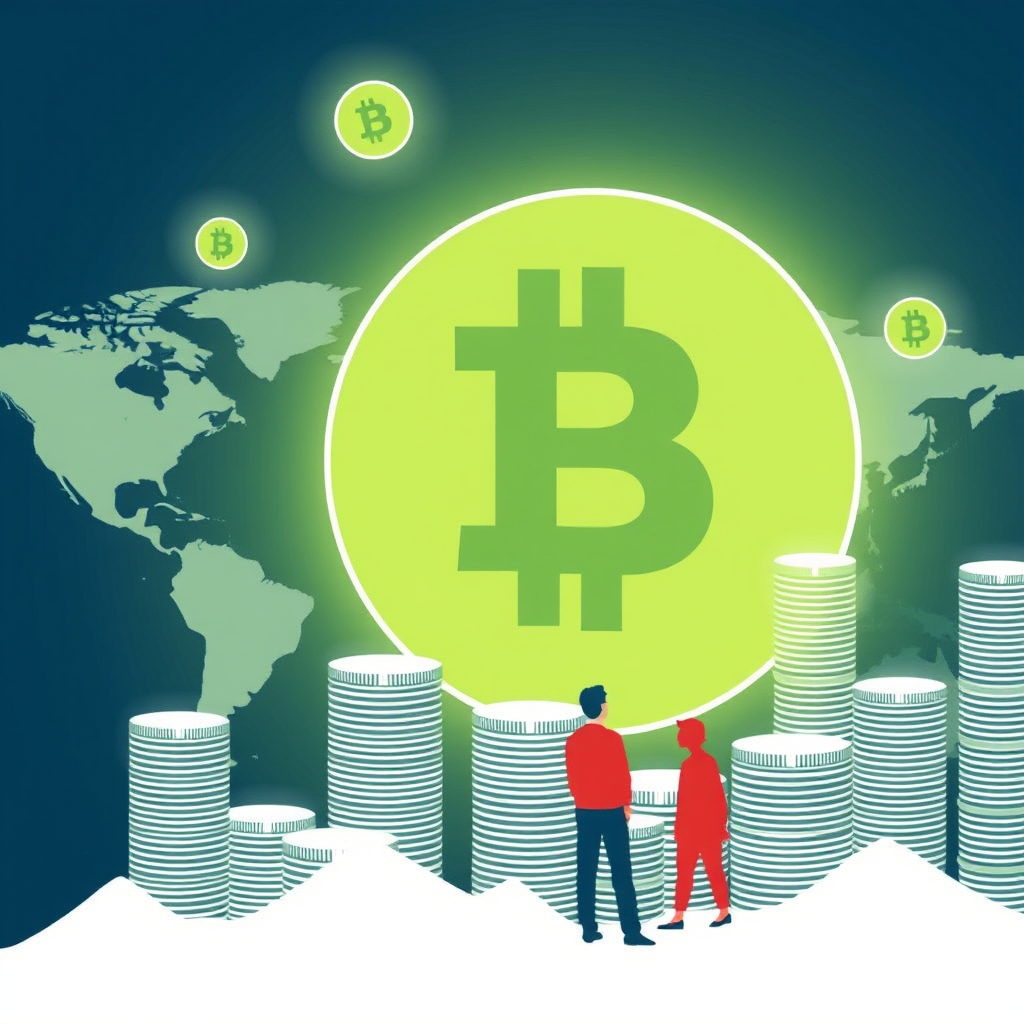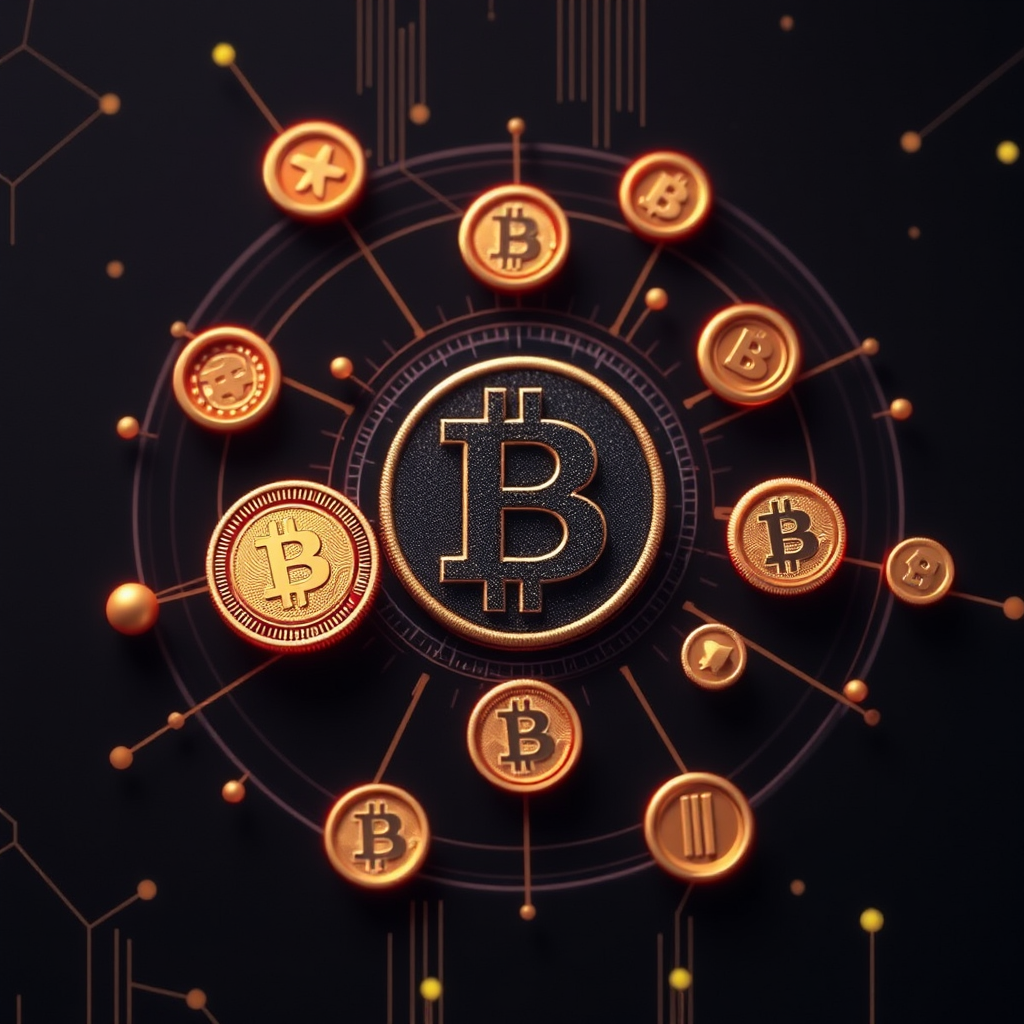Tokenized assets represent a digital transformation in the way ownership of physical or traditionally illiquid assets can be structured and traded. At its core, tokenization refers to the process of creating a digital representation of real-world assets using blockchain technology. These digital representations, or tokens, can embody a wide variety of underlying assets ranging from real estate and art to commodities and securities. Tokenized assets leverage the power of blockchain’s immutable ledger to record and verify transactions, thus providing enhanced security and transparency.
In essence, the concept of tokenized assets facilitates fractional ownership, enabling buyers to own a portion of physical assets, often with easier transferability and increased liquidity compared to traditional models. The notion aligns with the principles of decentralization, aiming to democratize access to investment opportunities that were once restricted to wealthy individuals or institutional investors.
As tokenization gains momentum on a global scale, it presents both opportunities and challenges for regulation. The blockchain technology underpinning tokenized assets inherently transcends national boundaries, thereby complicating regulatory approaches. Each jurisdiction must navigate how existing laws apply to these digital assets or whether new frameworks need to be developed. The regulatory landscape is rapidly evolving to address consumer protection, anti-money laundering, and securities law compliance, aiming to foster innovation while mitigating risks.
Global regulatory frameworks

As the phenomenon of tokenized assets continues to grow, regulatory frameworks around the globe are being developed to address the inherent complexities and cross-border nature of these digital innovations. Different regions are employing various approaches, often influenced by their economic priorities and existing legal infrastructures. The patchwork of global regulation highlights the challenge of harmonizing standards while acknowledging diverse financial ecosystems and legal traditions.
In attempting to establish clarity and stability, many countries are aligning their regulatory measures with international guidelines set forth by organizations such as the Financial Action Task Force (FATF), which issues recommendations on combating money laundering and terrorist financing. These guidelines contribute to shaping a cohesive strategy for managing tokenized assets within a robust framework of know-your-customer (KYC) procedures.
The European Union (EU), for example, is spearheading regulatory advancements with its Markets in Crypto-Assets Regulation (MiCA) proposal, which seeks to introduce a comprehensive legal framework for crypto-asset markets. This initiative aims to create uniformity across member states, thereby enabling more straightforward operations for businesses and providing stronger protections for consumers. By establishing clear definitions and classifications, the MiCA hopes to accommodate innovation while reducing potential financial risks.
In the United States, regulation is fragmented, with multiple agencies providing oversight based on how tokenized assets are categorized. The Securities and Exchange Commission (SEC) plays a crucial role in overseeing securities-related offerings, while the Commodity Futures Trading Commission (CFTC) addresses tokenized assets that resemble commodities. This division of responsibilities requires ongoing refinement to ensure clarity and effectiveness.
Asian regulators are also actively constructing frameworks that reflect their unique market dynamics. Singapore’s approach exemplifies a balanced regulatory environment, encouraging growth through their Payment Services Act, which establishes a licensing regime for digital payment token services. By fostering a supportive ecosystem, Singapore aims to attract blockchain enterprises and further its reputation as an innovation hub.
These examples reflect how regulatory frameworks are evolving on a global scale, striving to balance the dual objectives of innovation and protection. As nations continue to develop and iterate upon their respective regulations, international collaboration and dialogue become increasingly vital to navigate the complexities of tokenized assets in the global financial landscape.
Country-specific regulations and case studies
Countries around the world are approaching the regulation of tokenized assets with varied methodologies, creating a diverse landscape influenced by distinct legal, economic, and cultural contexts. Examining some country-specific regulations and case studies offers insights into this evolving regulatory terrain and highlights the innovative strategies being employed to navigate these new financial instruments.
Switzerland stands out as a pioneer in the regulation of digital assets, establishing a comprehensive framework that houses blockchain technology under a supportive legal structure. The Swiss Financial Market Supervisory Authority (FINMA) has issued clear guidelines that categorize tokens into payment, utility, and asset tokens, ensuring that each type is appropriately regulated under existing financial laws. Switzerland’s pragmatic approach has positioned it as a global leader in the crypto space, attracting numerous blockchain ventures.
In contrast, China has taken a more restrictive stance, initiating stringent controls to curb the potential risks associated with tokenized assets. In 2017, the People’s Bank of China banned initial coin offerings (ICOs) and shut down domestic cryptocurrency exchanges as part of efforts to maintain financial stability and control capital flows. Nevertheless, China has not dismissed the technology entirely; instead, it has channeled efforts into developing its central bank digital currency (CBDC), illustrating a complex regulatory environment that distinguishes between private and state-backed digital currencies.
The United Arab Emirates (UAE) is emerging as a blockchain-friendly jurisdiction with its proactive and adaptive regulation of tokenized assets. The Dubai Financial Services Authority (DFSA) has developed a supportive regulatory framework to encourage innovation while ensuring investor protection. This is evident in the creation of the Dubai Blockchain Strategy, aiming to solidify Dubai’s status as a leading destination for blockchain enterprises.
Meanwhile, in the United Kingdom, the Financial Conduct Authority (FCA) has adopted a measured approach in the regulation of tokenized assets, focusing on understanding the risks and benefits before introducing comprehensive regulations. The FCA launched the Regulatory Sandbox in 2016 to allow businesses to test innovative products and services in a controlled environment, enabling regulatory learning and fostering innovation within the sector.
These case studies emphasize the diverse regulatory strategies employed by various jurisdictions, showcasing the global efforts to balance enabling innovation with safeguarding the financial system and investors. Such regulatory diversity reflects the intricacies involved in adapting existing legal frameworks to accommodate tokenized assets, underscoring the necessity for international cooperation as countries experiment with differing approaches to their integration into the global financial system.
Challenges in regulating tokenized assets

The regulation of tokenized assets presents significant challenges, given their novel structure and the innovative technology underpinning them. One of the primary hurdles is the inherent complexity of regulating assets that can easily cross borders, potentially bypassing traditional financial systems. The global nature of blockchain technology means that tracing transactions and ensuring compliance with local laws becomes exponentially more difficult. This transnational characteristic demands enhanced cooperation and coordination among different jurisdictions to establish regulatory consistency while respecting individual sovereignty.
Another critical challenge is the rapid pace of technological evolution itself. Regulatory bodies often struggle to keep up with the innovations in blockchain and digital assets, risking the possibility of regulations becoming outdated quickly. This fast-paced development sometimes leads to regulatory arbitrage, where actors may move to jurisdictions with less stringent regulations, thus undermining global regulatory efforts. Crafting flexible yet sturdy regulatory frameworks is essential to accommodate the dynamic nature of tokenized assets while ensuring protection and stability in the financial system.
Consumer protection and security present additional obstacles in the regulation of tokenized assets. The decentralized and pseudo-anonymous characteristics of blockchain can attract fraudulent activities and scams, including phishing attacks, Ponzi schemes, and unauthorized promotions. Regulators must develop comprehensive measures to protect consumers without stifling innovation, balancing stringent oversight with the freedom needed for technological advancements. Ensuring robust cybersecurity standards and creating awareness among consumers are vital elements in addressing these concerns.
The fragmentation of existing regulations within various jurisdictions also complicates the regulatory landscape. With different countries adopting varying definitions and classifications of tokenized assets, reaching a universally accepted understanding proves challenging. Each region’s approach affects international operations, necessitating harmonized standards without disregarding local economic and legal nuances. Crafting regulations that align with international norms and facilitate interoperability across markets while allowing for domestic flexibility is crucial for the sustainable growth of tokenized assets.
The novel nature of tokenized assets further complicates their regulation due to difficulties in categorization and compliance with existing frameworks. Determining whether a token qualifies as a security, commodity, or utility requires clarity, as misclassification could result in regulatory breaches and associated penalties. This issue is amplified by the hybrid characteristics of some tokens, which may straddle multiple regulatory categories, thus necessitating bespoke solutions to ensure compliance across all applicable regulations.
Despite these challenges, the ongoing dialogue and collaboration among regulatory bodies, industry participants, and international institutions underpin the evolving regulatory landscape for tokenized assets. By fostering an environment of cooperation and knowledge-sharing, stakeholders can address these complexities, paving the way for a resilient, transparent, and secure global market for tokenized assets.
Future trends and developments

The landscape for tokenized assets is poised for transformative changes as emerging technologies and evolving regulations continue to shape their trajectory. A prominent trend is the increasing integration of artificial intelligence and machine learning in blockchain systems, enhancing the efficiency and security of tokenization processes. These technologies can provide real-time analytics and insights, enabling regulators and market participants to make more informed decisions and predict market trends more accurately.
Additionally, interoperability between different blockchain platforms is expected to advance significantly. As various blockchains begin to communicate and transact seamlessly, it will open up new possibilities for tokenized assets on a global scale. This development could lead to more streamlined cross-border transactions and reduce the complexities associated with the current fragmentation in blockchain ecosystems. Enhancing interoperability could also encourage a broader global regulatory consensus, as unified systems may align more easily with international standards, facilitating smoother international cooperation.
Another key trend is the potential for increased tokenization of new asset classes. Beyond traditional securities, real estate, and commodities, industries such as intellectual property, carbon credits, and even human capital are being explored for tokenization. This diversification of tokenized assets could democratize access even further, presenting new investment opportunities and stimulating economic inclusivity. As these diverse assets gain recognition, regulatory frameworks will need continuous adaptation to manage the unique characteristics of each class while maintaining market integrity.
The role of central bank digital currencies (CBDCs) is also expected to influence the future landscape of tokenized assets significantly. As more countries explore or implement their digital currencies, the interplay between CBDCs and tokenized assets will become a focal point for regulators and financial institutions. This relationship could redefine how digital currencies and assets transact, fostering innovation while posing new regulatory challenges. Through coordinated efforts, central banks, financial entities, and regulatory bodies can harness the synergy between CBDCs and tokenized assets to enhance the global financial system’s efficiency and security.
Moreover, sustainability and environmental considerations are becoming increasingly significant in the discourse on tokenized assets. As environmental, social, and governance (ESG) criteria gain prominence in financial markets, the industry is witnessing a push towards greener practices in blockchain technology. Efforts to reduce the environmental footprint of tokenized transactions are expected to intensify, with innovations in energy-efficient consensus mechanisms and the growth of eco-friendly blockchain protocols playing critical roles in this shift.
As the future of tokenized assets unfolds, collaboration between regulators, technologists, and industry stakeholders will be vital for fostering a supportive and innovative environment. The dynamic interplay between regulation and technological advancement will be crucial in shaping a stable yet flexible global market for tokenized assets, promising enhanced accessibility, transparency, and inclusivity in the financial landscape. By embracing these trends, the industry can pave the way for a robust and resilient ecosystem that not only meets present needs but also anticipates future opportunities and challenges.






